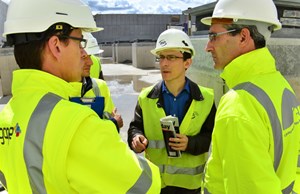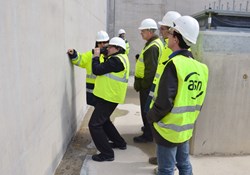
As stipulated in the ITER Headquarter Agreement of 2007, the French Nuclear Safety Authority can carry out between five and ten inspections per year.
On Tuesday 24 April, for the third time in ten months, the French Nuclear Safety Authority (ASN) dispatched a group of inspectors to ITER. Regular inspections of ITER's nuclear installation are implemented within the framework of the ITER Headquarters Agreement, which was signed on 7 November 2007 by the ITER Organization and France.
As stipulated in the Agreement, ASN can carry out between five and ten inspections per year. "We are notified of their visit in advance, but not of the issues they will be investigating," says the head of the ITER Licensing Cell Joëlle Elbez-Uzan.
During their first visit on 20 July 2011, the ASN inspectors looked at the general organization of ITER, focusing on the implementation of quality control procedures all through the chain of contractors. Their conclusion was that the ITER Organization system is "robust."
The second ASN visit on 26 January 2012 was devoted to analyzing the procedures by which the ITER Organization deals with the inevitable "deviations" in the construction works such as small cracks in concrete or slight discrepancies in the plane of the surfaces. ASN considered on this occasion that the notification process—from the moment a deviation is identified by the contractor until a non-conformance report is processed by ITER Organization—was not satisfactory and had to be improved.

One by one, ASN checked the cracks (most of them a fraction of a millimetre deep) scratches, chipped edges in concrete fillings and other slight departures from perfection...
Last Tuesday, ASN experts decided to see for themselves and descended into the Pit in order to check, one by one, the cracks (most of them a fraction of a millimetre deep), scratches, chipped edges in concrete fillings, and other slight departures from perfection.
As with every inspection, an official letter will soon be sent to the ITER Organization detailing the actions requested by ASN. "Our responsibility as a nuclear operator is to ensure the supervision of the supplier chain and the way in which safety requirements are implemented," says Joëlle. "Filling a crack, however small, is important.
And working on an improved concrete 'formula' is one the solutions to be investigated in order to minimize the size of cracks at a further stage of construction."
A shallow crack on the surface of a retaining wall or slight discrepancies in surface plane might be considered by some as very minor defects. In nuclear safety, however, nothing is minor.



